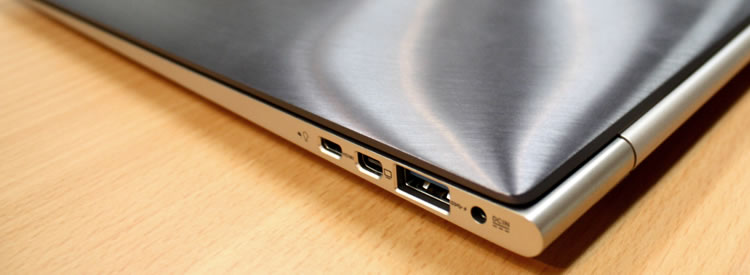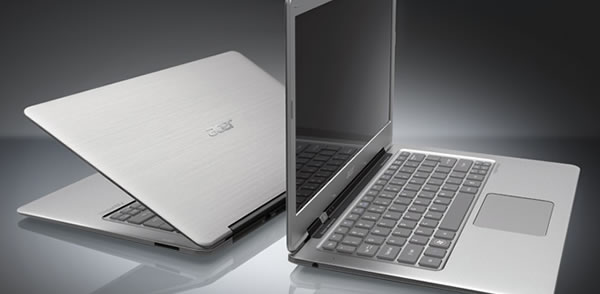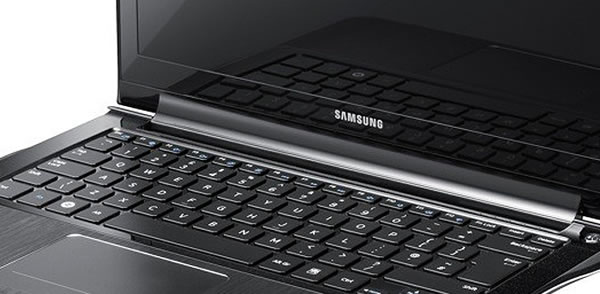Ultraportables, thin and light laptops, ultrabooks, no matter what the name, arguably they represent the future of the form factor. Notably, Apple has been flirting with the concept since the MacBook Air was launched in 2008, but other manufacturers such as Lenovo and Sony have also heavily contributed to the design and development of lightweight notebooks in the past decade.
It appears as though we're just now arriving to that sweet spot where fewer compromises can be made to build fast and svelte machines that are budget-friendly, all at the same time. Intel has recognized this trend and is investing heavily to make sure they become the platform of choice to build 'ultrabooks' (they own that trademark).
However, it's easy to miss what a true next-generation ultraportable notebook should be. Manufacturers are short-sighted if they only focus on building fast machines that weigh 3 pounds or less, without putting design and user experience at the core of their future developments.
Recent examples of mainstream ultraportables include the Asus ZenBook UX31, Toshiba Portégé Z835, Lenovo U300. All of these machines rely on Intel's CULV Sandy Bridge platform and, for better or worse, they are directly compared to Apple's MacBook Air, which is widely regarded as the benchmark to beat in this form factor and price range.
With that under consideration, here are some key aspects where I believe PC makers should focus and where some are already failing on their first try to deliver a killer ultrabook.
Battery Life
You can thank tablets for the notion that portable computers should last longer than a mere 3 hours on battery. Triple that figure and that's the kind of expectation that has been building up with every iteration of newer, more efficient notebook platforms in the past decade.
The first ultrabook that arrived to market, the Acer Aspire S3, had a rather poor showing, shipping with an attractive price but a less-than-stellar battery life. Other competing products from Asus, Samsung and Lenovo have done considerably better.
The (easy) bottom line: don't ship a system if it cannot compete on battery life. Go back to the drawing board, charge an extra $50, do what you have to do, but this is one key aspect that can't be ignored.
Build Quality
Basic hardware that withstands the most abuse should be a main focus. In other words, a great ultrabook needs a great keyboard and touchpad, not mere afterthoughts thrown on top of a powerful processor and fast storage. ThinkPad's strong and lasting reputation is well deserved after years of offering solid machines that have some of the best keyboards on the market.
In a similar fashion, we're well past the point where it's acceptable to ship sub-par screens with poor viewing angles.
To be fair, PC makers are doing remarkably well today compared to where they were two years ago. Build quality on sub-$1000 systems used to be mediocre and netbook-like, but that's no longer the case for the most part.
The Asus UX31 and Toshiba Portégé Z835 are prime examples of what a well-conceived ultrabook should be. Having that said, there's still room for improvement.
User Experience
Among Intel's requirements for ultrabooks are fast boot and wake from sleep times. This usually requires a solid-state drive, which is possibly the best addition you can make to any laptop. Samsung did a remarkable job of optimizing their Series 9 laptops – some of the best in the market even though they're not "ultrabooks" – and other manufacturers are following suit.
In my opinion, boot times, while important, are heavily overrated. Personally I'd take any system with a 2 minute boot time and 2 second 'wake from sleep' over an identical machine that can boot in 30 seconds but takes more than 5 seconds to wake up. Sheer convenience in a modern OS should dictate not having to reboot all the time and instead being able to put your system to sleep and get back to work almost instantaneously whenever you need it.
Annoying bundled software is yet another element crippling users' experience. Who needs a Wi-Fi manager on top of Windows built-in tools, trial Office software and security (when you can get Microsoft's Security Essentials for free), a dozen of so-called services, shopping desktop shortcuts and, wait for it, nagging browser toolbars (!).
Apple is credited for making great products. Even though that may not always be the case, they succeed at making products people love, recommend to friends, and ultimately buy again. Where do you think PC makers stand when they sell a computer loaded with crapware for no good reason? Let's end this horrible practice once and for all.
Branding and Incremental Updates
Some manufacturers do better than others in this respect. For a while, Acer seemed to have a great run with their Timeline laptop series. The first models were great, but instead of taking what was good and building upon those strengths, they systematically killed the brand by offering many different models with no true differentiation. There was this notion with later models that the originals had a better finish than subsequent releases.
In a somewhat similar scenario, Dell had more than one hit with their XPS notebooks and with the Adamo, but in my mind those are dead brands for premium machines.
Sony also comes to mind for poor branding practices. They have offered some of the best premium-priced ultraportable machines in the past few years. The Vaio T series evolved into the TX, TXN, TZ, and today it's the Z series holding the torch. But is anyone following any buzz surrounding the company's future announcements in this segment?
In today's commoditized PC market, Apple's practice of offering a handful of identifiable products that are updated constantly, and most importantly, building upon what's good on the first to improve the following year's model seems to be one valid route to success. You might recall, the MacBook Air was seen as a novelty three years ago, but is now one of Apple's best-selling computers.
In my opinion, it goes hand in hand: strong branding, building expectations and long-term reputation, then delivering a machine that is always a comprehensive incremental update over its previous generation.
Unfortunately this is hardly seen from most PC makers who try to redo their products from scratch every year, failing to understand what their most loyal customers want updated, and on occasion completely losing the formula of what made the original product appealing in the first place.





